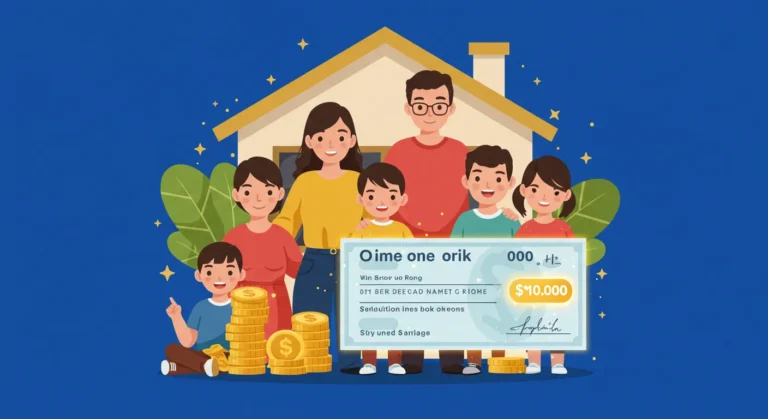What is the middle class income? It’s a question many of us find ourselves asking, especially when navigating financial choices in a world that seems to be spinning faster every day. As you gather with friends or family, there’s often a mix of pride and anxiety as people share their earnings, aspirations, and the expectations that surround them. Understanding middle-class income is key, not just to know where you stand, but to chart the path ahead for yourself and your loved ones.
When we examine the concept of middle-class income, we delve into a distinctive socioeconomic group that plays a critical role in shaping our economy and society. Middle-class families often embody hopes for the future—homeownership, quality education, and a reasonable work-life balance. But what income range defines the middle class, and why does it matter? Let’s unpack this intriguing topic step by step, ensuring you get the insights you need.
As we explore this term, we can’t overlook its evolving definition. Middle-class income varies significantly based on geographic location, family size, and even the economic context of the times. What was regarded as middle class a decade ago may differ greatly from today’s standards. But let’s not get bogged down by numbers alone; we want to paint a picture of real lives affected by these income brackets.
So, what is the middle class income? It’s more than just a number; it reflects aspirations, challenges, and the everyday experiences of millions of individuals striving for stability in a world of uncertainty. Join me as we break down this concept through engaging discussions and practical examples that reflect not only the data but also the human stories behind it.
Understanding the Middle-Class Income Range
The Basic Income Brackets
To define what middle-class income looks like, we must start with numbers. In the United States, for example, the Pew Research Center designates the middle class as those earning between two-thirds and double the median household income. As of 2022, this ranged from approximately $52,000 to $156,000 for a household of three. However, other countries adopt different benchmarks, so context is crucial. Let’s take a closer look at how various regions define middle-class income.
Global Perspectives on Middle-Class Income
In many developed nations, a middle-class income often aligns closely with comfortable living standards, including home ownership and quality education. In contrast, emerging economies may have a significantly lower threshold for middle-class classification. A family in India might be recognized as middle class with an annual income of around $12,000, while in Europe, the number fluctuates based on the cost of living and local economic conditions.
The Importance of Geographic Context
Cost of Living Considerations
Location plays a massive role in what constitutes middle-class income. For example, living in New York City often requires a larger income to maintain a middle-class lifestyle than living in a rural town in Iowa. It’s essential to analyze how factors like housing costs, taxes, and local wages contribute to these differences. You might be surprised to discover just how much city living can strain even a well-paying middle-class income.
Case Study: Comparing Cities
Imagine two friends: Sarah lives in San Francisco and Mike lives in Dallas. Sarah earns $100,000 a year, feeling financially squeezed in a high-cost area, while Mike earns $80,000 and enjoys a considerably more relaxed standard of living. This example illustrates that a figure alone doesn’t capture the complete picture of financial well-being, showcasing how geography shapes financial realities.
The Evolving Middle Class Landscape
Economic Shifts and Their Impact
Changes in the economy, such as the rise of gig work and remote employment, have transformed traditional understandings of middle class. Many individuals are redefining what stable employment looks like as they engage in part-time jobs or freelance work. These shifts challenge the static notions of income brackets, making it necessary to reconsider what “middle class” means in real economic terms.
Future Trends
Looking ahead, we must consider emerging trends that may redefine middle-class status even further. Automation and artificial intelligence are reshaping job markets, potentially displacing many traditional roles. As industries evolve, we might see an expanded or condensed middle-class income bracket—a dynamic affecting both personal finances and societal structures.
Barriers to Achieving Middle-Class Stability
The Challenges of Modern Living
Although middle-class income may suggest a comfortable lifestyle, various obstacles stand in the way of achieving lasting stability. Student debt, rising housing costs, and healthcare expenses can create significant hurdles, pulling even stable households closer to the financial edge. Let’s think about this: a family making $70,000 might appear to be financially secure, yet they may still struggle with overwhelming debt and unexpected medical bills.
Personal Anecdote: Navigating Financial Challenges
Consider Lisa, a mother of two with a joint income of $75,000. On paper, she fits the middle-class mold, but with student loans and childcare services eating up her budget, she often finds herself worrying about monthly expenses. Stories like Lisa’s remind us that middle-class income is nuanced and often tied to dreams and struggles that numbers alone can’t convey.
The Future of the Middle Class
Adapting to Change
The question remains: how do you envision your future within the middle class? Phrases like “living paycheck to paycheck” or “just getting by” reflect the realities faced by many today. Yet, the future appears bright for those willing to adapt and innovate. Learning new skills, engaging in lifelong education, and embracing technology can help bolster your position within this evolving landscape.
Your Role in the Changing Economy
By continually assessing personal goals and aligning them with market demand, you can carve out a secure space within the middle class. Will you seize opportunities, embrace change, and leverage your abilities to safeguard your family’s aspirations? Remember, you have the power to influence your income trajectory and redefine your personal middle-class story.

Useful links
Conclusion
As we wrap up our exploration of middle-class income, it’s essential to recognize that this concept is more than just numbers. It’s about aspirations, values, and the way we envision our lives and futures. The middle class often symbolizes stability and opportunities—whether it’s owning a home, sending kids to college, or enjoying a weekend getaway. It’s a blend of hope and hard work, and knowing where you fit into this spectrum can profoundly shape your financial goals and decisions.
Understanding middle-class income can also spark conversations about equity and societal progress. As we navigate an increasingly complex economy, many of us are asking whether today’s middle class can still maintain its status. The fluctuations in income thresholds across regions and the growing divide in wealth equality make this discussion vital. So, I hope you now feel more informed and perhaps even motivated to engage with these issues more deeply.
Ultimately, whether you identify with the middle class or are curious about it, it’s clear this demographic influences our economy and culture significantly. Let’s keep discussing what middle-class income means for all of us, for as we do so, we open ourselves up to better understanding and more opportunities to uplift each other.
Frequently Asked Questions
What factors determine middle class income?
The determination of middle class income involves various factors, including location, family size, and economic conditions. Generally, it encompasses a range of income levels that enables individuals or families to cover basic living expenses while enjoying some discretionary spending. In higher cost areas, what is deemed middle class can be substantially higher than in rural regions. Moreover, family needs, such as raising children or caring for elder relatives, can impact what constitutes adequate middle-class income in any given context.
How is middle class income measured in different countries?
Middle class income varies globally, often influenced by differing economic structures and cultural expectations. In some countries, it’s measured by a percentage of the median national income, while in others, purchasing power parity plays a crucial role. For example, in many European nations, a household earning between 70% and 200% of the national median income often qualifies as middle class. Exploring these variations is vital for a comprehensive understanding of the global economic landscape.
How does inflation impact middle class income?
Inflation significantly influences middle class income by eroding purchasing power. Even if salaries increase nominally, if those increases do not keep pace with inflation, the middle class can feel financially squeezed. This situation often leads families to cut back on essential expenses or luxuries they once enjoyed. Understanding this relationship encourages a deeper conversation about wage growth and economic policies aimed at protecting buying power, which is crucial for maintaining a healthy middle class.
Is it possible to move out of the middle class?
Absolutely, moving out of the middle class is possible, and it often involves strategic life choices related to education, career opportunities, and savings. Many people leverage higher education or vocational training to secure better-paying jobs. Others might invest in stocks or real estate, building wealth over time. However, this process can be challenging and is influenced by socio-economic factors such as access to quality education and networking opportunities, highlighting the need for supportive policies to facilitate upward mobility.
What role does education play in achieving middle class status?
Education is often a gateway to achieving or maintaining middle class status. Higher levels of education generally correlate with better job prospects and higher salaries. For many, obtaining a college degree or professional certification opens doors to careers that provide the stability and income associated with the middle class. However, educational access and affordability remain significant hurdles, underscoring the need for ongoing debate about equitable education systems.
Can middle class income support a family?
Middle class income can often support a family, but this largely depends on geographic location and family size. In many urban settings, families may find it challenging to sustain a comfortable lifestyle on a typical middle-class income due to higher living costs. Conversely, in smaller towns or cities, middle-class income can allow for a more manageable standard of living. Ultimately, planning, budgeting wisely, and adjusting expectations are vital for families to thrive within their financial means.
How does the perception of middle class income differ across generations?
The perception of middle class income often varies by generation, shaped by distinct economic landscapes and cultural factors. For example, Baby Boomers may associate middle class status with home ownership and stable jobs, whereas Millennials and Gen Z might place greater value on experiences over material wealth. Moreover, as younger generations face rising education costs and shifting job markets, their ideas about financial success and what defines middle class are evolving, signaling a cultural shift in understanding wealth and stability.


